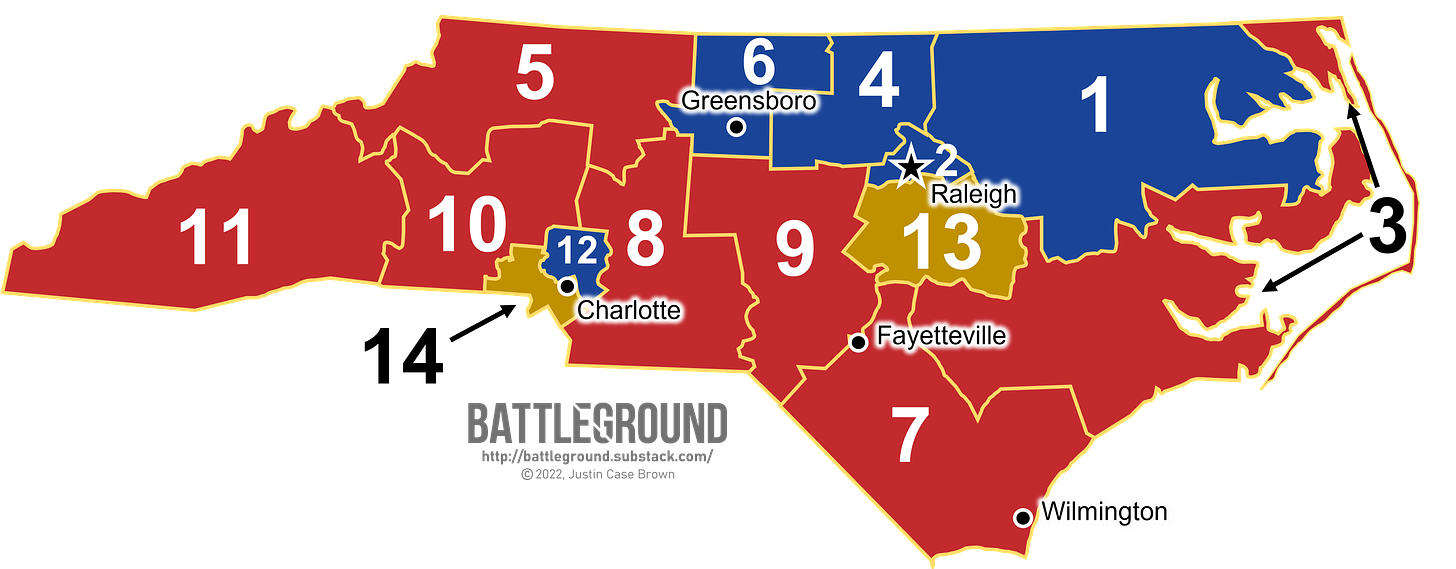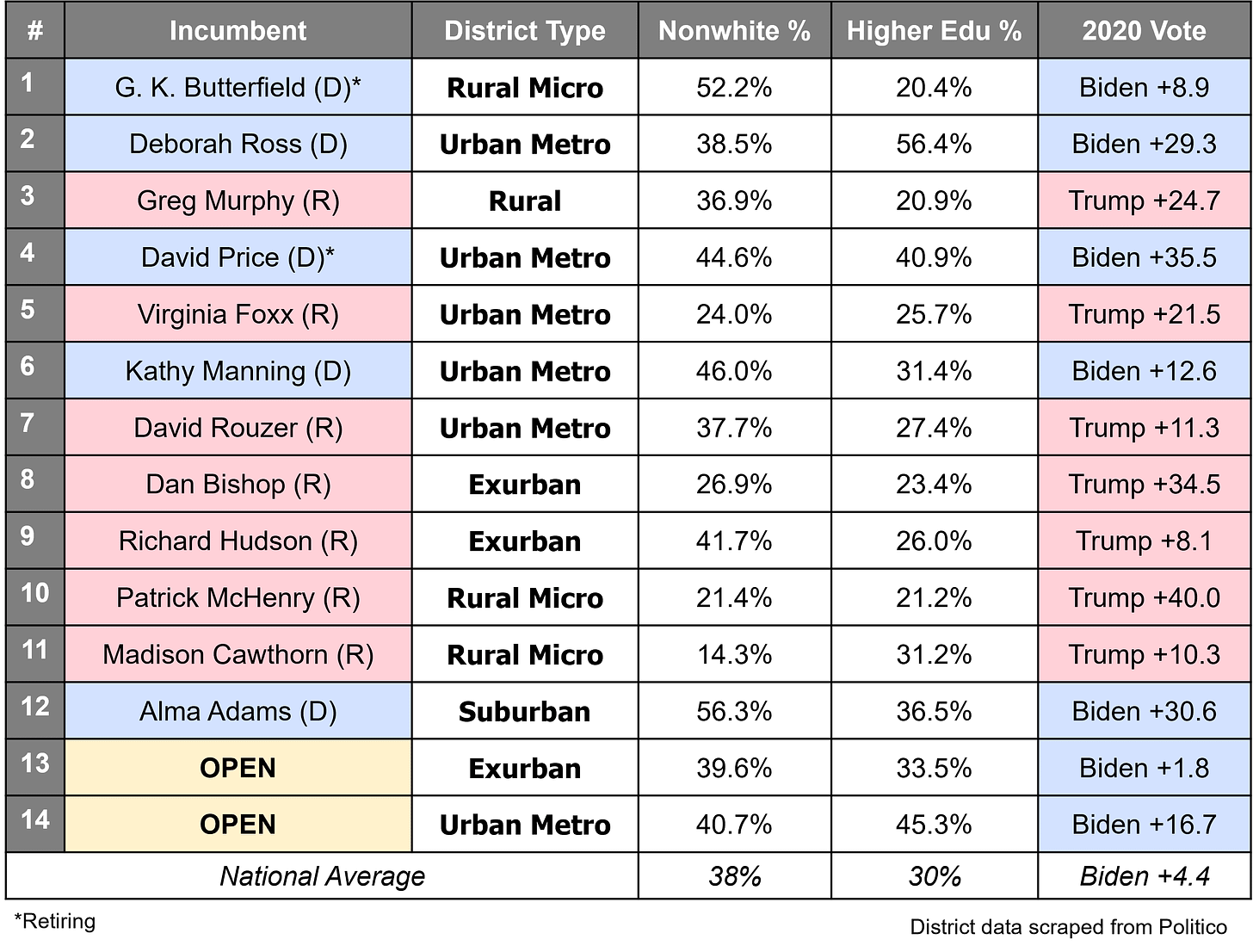North Carolina: Court-Ordered Competition
The Supreme Court rejects Republicans' request for their own maps, finalizing court-drawn districts for North Carolina.
This post builds on last month’s post on North Carolina’s new congressional districts. Read that first to get up to speed.
Topline Takeaways
The North Carolina Supreme Court previously ruled that maps drawn by Republicans violated the state constitution due to partisan gerrymandering. New districts (shown above) were drawn by state court justices, as dictated by state law.
North Carolina Republicans appealed their state court’s decision to the Supreme Court. The nation’s highest court denied their request, upholding the court-drawn map for the 2022 elections.
The new map makes several districts more competitive while also giving Democrats two more seats (up from the previous five) that lean in their favor.
How Did We Get Here?
North Carolina has traveled a long, winding road to get to the maps we see today. Back in November when the process began, Republicans held complete control of the redistricting process as they hold majorities in both state houses and are unrestrained by the state’s current Democratic governor in redistricting. The North Carolina General Assembly passed the original map in early November and was met with lawsuits shortly thereafter.
The state Supreme Court agreed that the new map violated the state constitution for partisan gerrymandering. After new districts were draw by a three-judge panel, Republicans appealed the decision to the US Supreme Court with the hope of having the original map reinstated. The US Supreme Court denied their request, upholding the court-drawn districts for the upcoming election cycle.
District Breakdown
The new congressional map is a boon for congressional Democrats. To start, the map incorporates North Carolina’s newly earned congressional seat by creating a second seat around the state’s largest city: Charlotte. This gives the region two safely blue seats, practically guaranteeing Democrats a +1. The new map also retains two majority-nonwhite districts.
The new map creates four competitive seats (districts won by less than a 10-point margin in 2020) and even creates a true “toss-up” seat that Biden won by less than 2 points. Again this is a major improvement for Democrats as the previously enacted map had three moderately competitive districts, none of which were decided by less than 5 points in the 2020 election. With these new districts, North Carolina Democrats can go from safely holding five seats to winning as many as seven in a good election. This balance is incredibly important to better reflect the voting trends of North Carolina as a whole.
In the five congressional elections that have happened since 2012, Democrats have beat Republicans twice in total votes for House candidates. Most recently in 2020, the parties nearly tied in raw votes, both nabbing roughly 2.6 million votes. But due to the tilted nature of the previous maps, Republicans nabbed 8 of the state’s 13 seats. Quick math proves the partisan gerrymander present in the state’s previous map: Republicans managed to win more than 60% of the seats without even winning a majority of the vote in 2020.
With the new districts in place, North Carolina Democrats can finally breathe a sigh of relief as in the coming elections, their state’s House delegation should more accurately reflect the true makeup of the state’s electorate.




